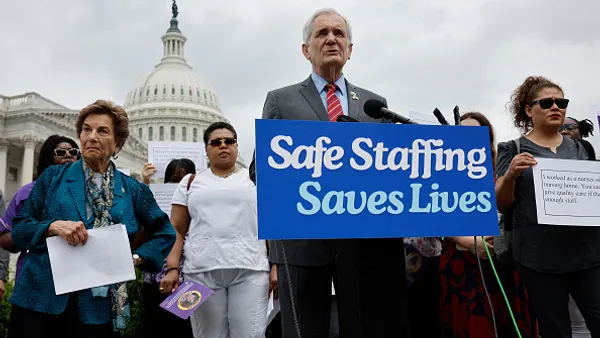Dive Brief:
- Worker productivity is up — but workers are also working longer hours, putting them at risk of burnout and low morale, according to research by Robert Half released Aug. 19.
- Nearly 7 in 10 managers say employee productivity has increased compared to a year ago, citing improved management practices, enhanced staff training and adoption of new technologies, including generative AI. Workers cited hybrid arrangements, windowed work options and compressed weekly schedules as ways to help them feel more engaged and productive.
- Notably, more than one-third of workers surveyed said they were putting in longer hours compared to last year, Robert Half said.
Dive Insight:
Increased productivity being linked to longer work hours may be cause for concern, said Dawn Fay, operational president of Robert Half, in a statement.
In 2023, studies indicated that worker productivity had been trending downward — and some pinned that issue on remote work more broadly.
But other studies and experts said that productivity losses could be pinned on a number of complex aspects: IT issues stemming from remote work, the ongoing uncertainty around COVID-19 disruptions and general burnout related to those problems.
"While advances in technology and enhanced processes have allowed for improved efficiencies, it's critical to monitor employee well-being and burnout,” Fay said.
Similar to Robert Half’s suggestions, other survey results suggest that flexibility regarding work time could help alleviate burnout and encourage retention. How that looks can vary. One analysis from Flexa showed that job hunters prefer roles that offer “core hours”, where start and end times of workdays can vary as long as they work the indicated core hours by the company.
Related, a report from ResumeBuilder.com noted that 3 in 4 workers would switch jobs to work a four-day work schedule — another suggestion made by workers surveyed by Robert Half.














